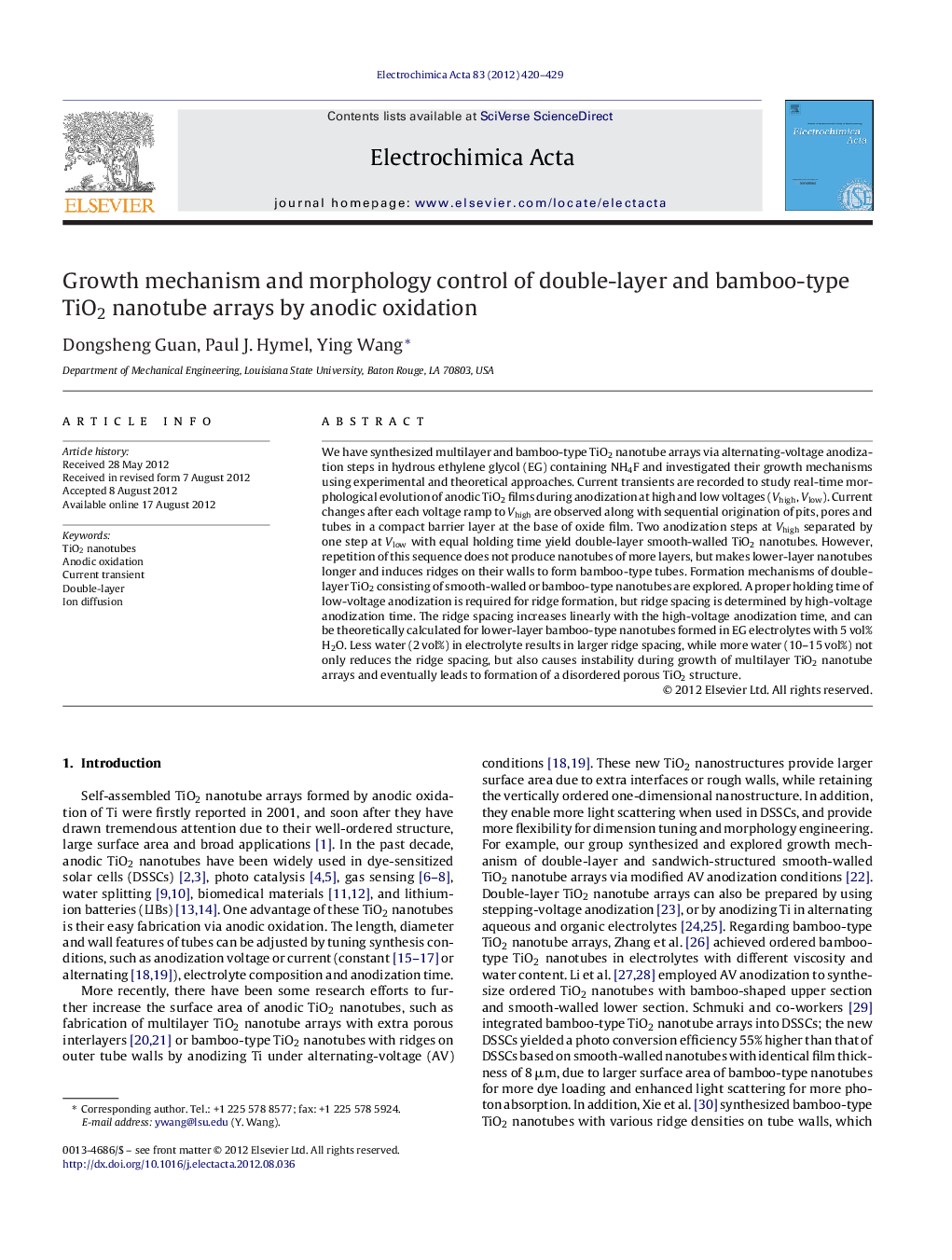| Article ID | Journal | Published Year | Pages | File Type |
|---|---|---|---|---|
| 188110 | Electrochimica Acta | 2012 | 10 Pages |
We have synthesized multilayer and bamboo-type TiO2 nanotube arrays via alternating-voltage anodization steps in hydrous ethylene glycol (EG) containing NH4F and investigated their growth mechanisms using experimental and theoretical approaches. Current transients are recorded to study real-time morphological evolution of anodic TiO2 films during anodization at high and low voltages (Vhigh, Vlow). Current changes after each voltage ramp to Vhigh are observed along with sequential origination of pits, pores and tubes in a compact barrier layer at the base of oxide film. Two anodization steps at Vhigh separated by one step at Vlow with equal holding time yield double-layer smooth-walled TiO2 nanotubes. However, repetition of this sequence does not produce nanotubes of more layers, but makes lower-layer nanotubes longer and induces ridges on their walls to form bamboo-type tubes. Formation mechanisms of double-layer TiO2 consisting of smooth-walled or bamboo-type nanotubes are explored. A proper holding time of low-voltage anodization is required for ridge formation, but ridge spacing is determined by high-voltage anodization time. The ridge spacing increases linearly with the high-voltage anodization time, and can be theoretically calculated for lower-layer bamboo-type nanotubes formed in EG electrolytes with 5 vol% H2O. Less water (2 vol%) in electrolyte results in larger ridge spacing, while more water (10–15 vol%) not only reduces the ridge spacing, but also causes instability during growth of multilayer TiO2 nanotube arrays and eventually leads to formation of a disordered porous TiO2 structure.
